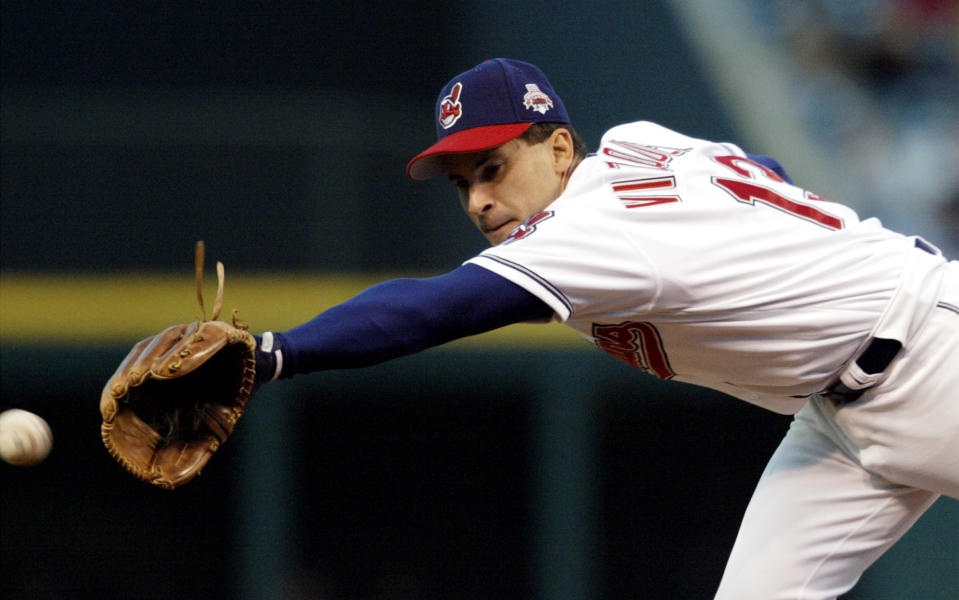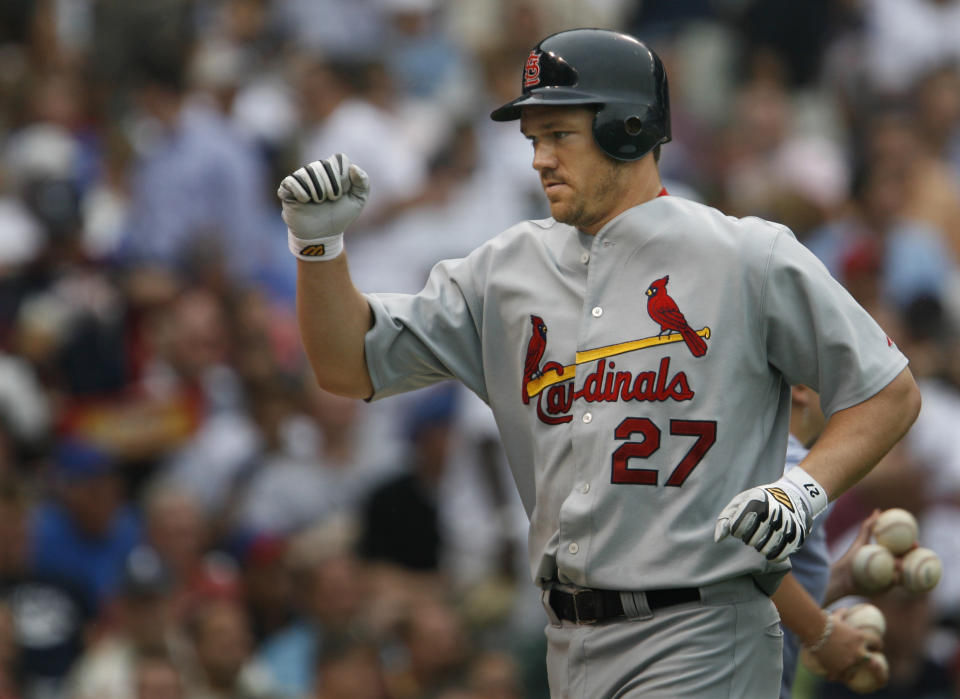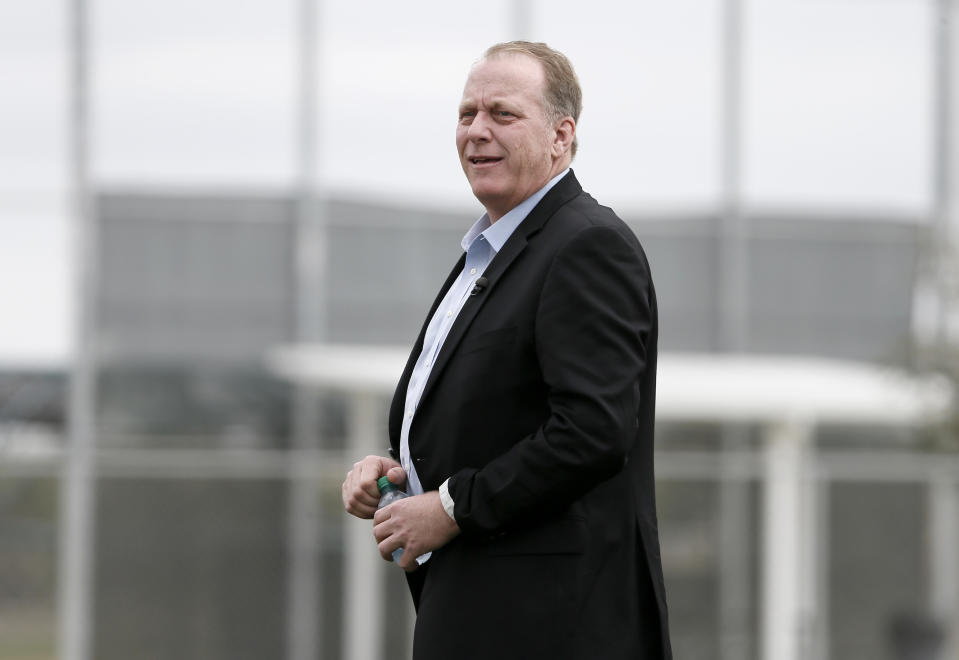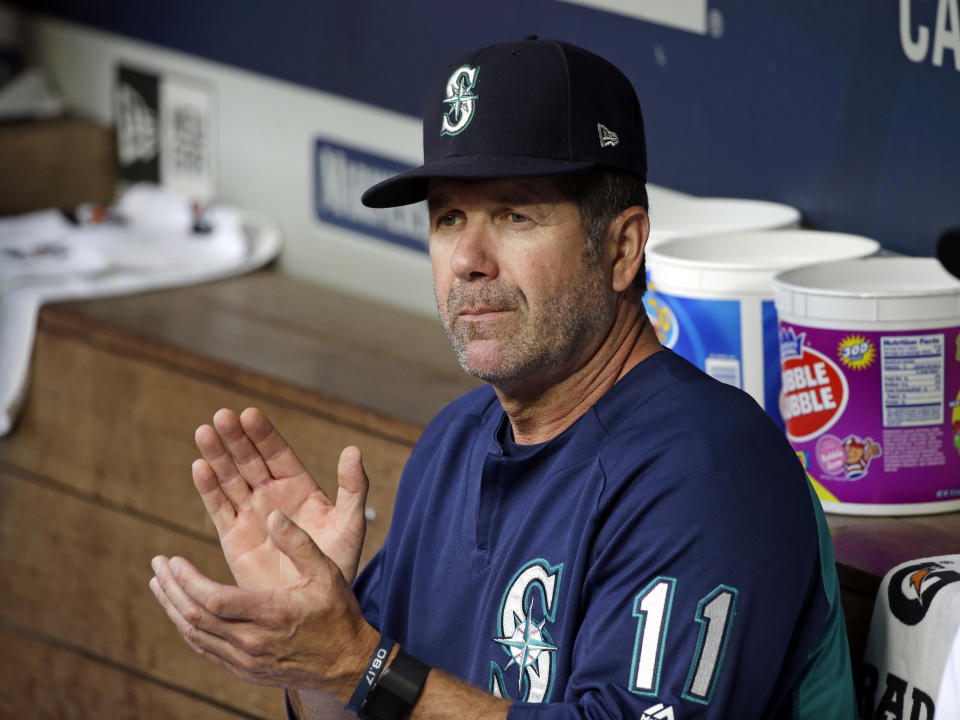The 17 most contentious names on the 2018 Hall of Fame ballot

The announcement of the baseball Hall of Fame ballot always inspires some hot Internet takes. Anyone who has followed along in recent years should be no stranger to those by now. The baseball community has dealt with the candidacy of Barry Bonds, Curt Schilling and Edgar Martinez lately.
This year should add more of the same. Among the new names to hit the ballot, Cleveland Indians infielder Omar Vizquel should be one of the more polarizing candidates. He’s not the only one. The 2018 Hall of Fame ballot also contains first-timers like Johan Santana, Andruw Jones and Scott Rolen.
Of the 33 players on the ballot, we counted 17 that elicit passionate arguments from both sides. This doesn’t include Chipper Jones, who everyone agrees is a consensus first ballot Hall of Famer. We’re talking about controversial candidates.
We’ve decided to break some brief cases for and against those candidates below, beginning with the newest players to reach the ballot.

FIRST-TIMERS
OMAR VIZQUEL
THE CASE FOR: The case for Vizquel is mostly based on intangibles. He was considered one of the best defensive shortstops of his era, played 24 years and was a leader on the field. He won 11 gold gloves and was a three-time All-Star.
THE CASE AGAINST: Vizquel falls short in pretty much every statistical category. He hit just .272/.336/.352 over his career. His career OPS+ was just 82, meaning he was 18 percent worse at the plate than his peers on offense. He reached 400 steals, but never got to any other significant offensive milestones. The defensive metrics love Vizquel, but even they don’t think his fielding was good enough to make up for his offensive deficiencies.
JOHAN SANTANA
THE CASE FOR: For close to eight seasons, Santana was the best pitcher in baseball. During this period, he won two Cy Young awards, led the league in strikeouts and ERA three times and made four All-Star teams. He finished his career with a 3.20 ERA over 12 seasons.
THE CASE AGAINST: Santana’s peak was strong but short-lived. He was only at the height of his power for eight seasons. At that point, injuries struck and he failed to return to form. Sandy Koufax is often the default go-to player when discussing guys with strong peaks who burned out quickly and Santana pitched 300 fewer innings than Koufax.

SCOTT ROLEN
THE CASE FOR: Rolen is a sabermetric candidate. He was consistently great over his career, hitting .281/.364/.490 over 17 seasons. That’s good for a 122 OPS+, meaning he was 22 percent better than the league-average on offense. The thing that really pushes Rolen ahead is his defense, though. The metrics loved him at third. Jay Jaffe’s JAWS system, which is used to evaluate Hall of Fame candidates, has Rolen just above the threshold at third. Notoriously, voters have been tough on the position.
THE CASE AGAINST: Rolen comes off as a Hall of Very Good player. He was a seven time All-Star and won eight Gold Gloves, but rarely challenged for MVP. He was overshadowed on his own team by Albert Pujols, so he was never considered the best player in St. Louis. He doesn’t come close to hitting many statistical benchmarks that voters like to lean on.
ANDRUW JONES
THE CASE FOR: Jones’ case is based on his exceptional defense in center field. When he was young, his defense carried him. He eventually blossomed into a strong hitter and even went on to crush 51 home runs in a single season.
THE CASE AGAINST: His offensive numbers weren’t overly impressive throughout his career. He was 11 percent better than the league-average according to OPS+. While his defense was elite early, Jones experienced a massive drop-off once he hit 30.
JIM THOME
THE CASE FOR: One of the best sluggers of his era. Ranks eighth all-time in home runs with 612. Finished with a .272/.402/.554 slash line over 22 seasons in the majors.
THE CASE AGAINST: Thome spent the majority of his career at DH, and voters haven’t fully embraced those players yet. He also played during the steroid era, though he’s never come up as a suspected user. It seems likely he’ll get in, but some voters could hold those things against him.

THE MAYBE THIS YEAR GUYS
TREVOR HOFFMAN, VLADIMIR GUERRERO
THE CASE FOR: Hoffman was one of the best relievers of his era and ranks second all-time on the saves list with 601. Guerrero was among the best hitters of his era, hitting .318/.379/.553 over 16 seasons.
THE CASE AGAINST: With Hoffman, it’s the advanced stats undervaluing relievers. The position changed so much that his numbers (aside from saves) don’t stack up to relievers who pitched in the ’70s. Everyone seems to think he was one of the best closers of his era, but some question how much a one-inning reliever should be valued. Many will admit Guerrero is a fringe candidate, but boost him up based on personal stories and anecdotes. People are quick to cite an impressive home run he hit or a time he showed off his unreal arm strength in the outfield. It’s their way of justifying his case as a Hall of Fame player.

THE SUSPECTED STEROID GUYS
BARRY BONDS, MANNY RAMIREZ, ROGER CLEMENS, SAMMY SOSA, GARY SHEFFIELD
THE CASE FOR: Every player above has the stats to waltz into Cooperstown, though people debate about Sosa and Sheffield.
THE CASE AGAINST: Many were suspected of taking steroids during their careers. Ramirez actually failed two tests while playing. Bonds and Clemens have seen their vote totals rise in recent years, but some voters still refuse to get on board.

THE CURT SCHILLING CATEGORY
CURT SCHILLING
THE CASE FOR: Schilling posted a 3.46 ERA over 20 years in the majors. While that figure doesn’t seem impressive at first glance, he put it up during the height of the steroid era. His 127 ERA+ is a better measure of his impressive numbers. He was a six-time All-Star, finished as the runner-up for the Cy Young award three times and was unbelievable in the postseason. He’s a fringe candidate, but his 2.33 postseason ERA in 133 1/3 innings give him an edge.
THE CASE AGAINST: His Twitter account. The Hall of Fame does have a character clause, which judges a player based on whether they are a decent person. Admittedly, the character clause is not well-defined, and is often used as a crutch by voters who simply don’t want to vote for a guy because they don’t like him. Still, Schilling has tweeted some unsavory things over the past couple years — we’re not just talking politics here. He was already a fringe candidate and his outspoken opinions may have been the slight nudge that convinced some voters to push him off their final 10.

STILL HANGING ON, BUT NEED HELP
EDGAR MARTINEZ, FRED MCGRIFF, MIKE MUSSINA, LARRY WALKER
THE CASE FOR: Martinez, Mussina and Walker are all fringe candidates based on advanced stats. All have flaws, but stats generally help their cases. McGriff is more of a traditional candidate who many feel was undervalued during his career. All of them have been on the ballot for multiple years and would need a late swell from voters to make the Hall.
THE CASE AGAINST: All fall short in some way. Martinez was never considered a bonafide star. McGriff’s numbers don’t stack up against elite first basemen. Mussina was considered more of a compiler who was never an elite performer. Walker gets dinged for playing in Colorado.
More MLB coverage from Yahoo Sports:
– – – – – – –
Chris Cwik is a writer for Big League Stew on Yahoo Sports. Have a tip? Email him at christophercwik@yahoo.com or follow him on Twitter! Follow @Chris_Cwik

 Yahoo Sports
Yahoo Sports 
